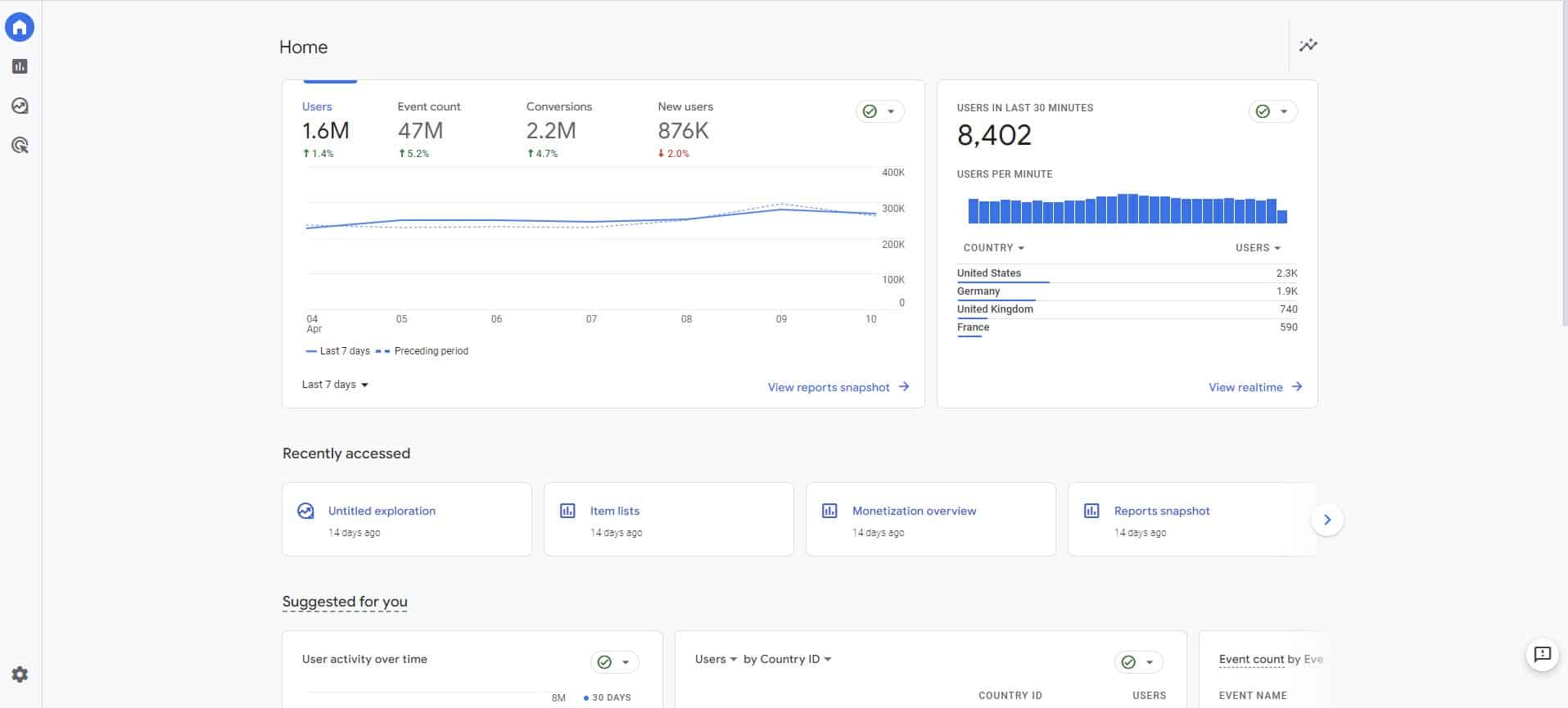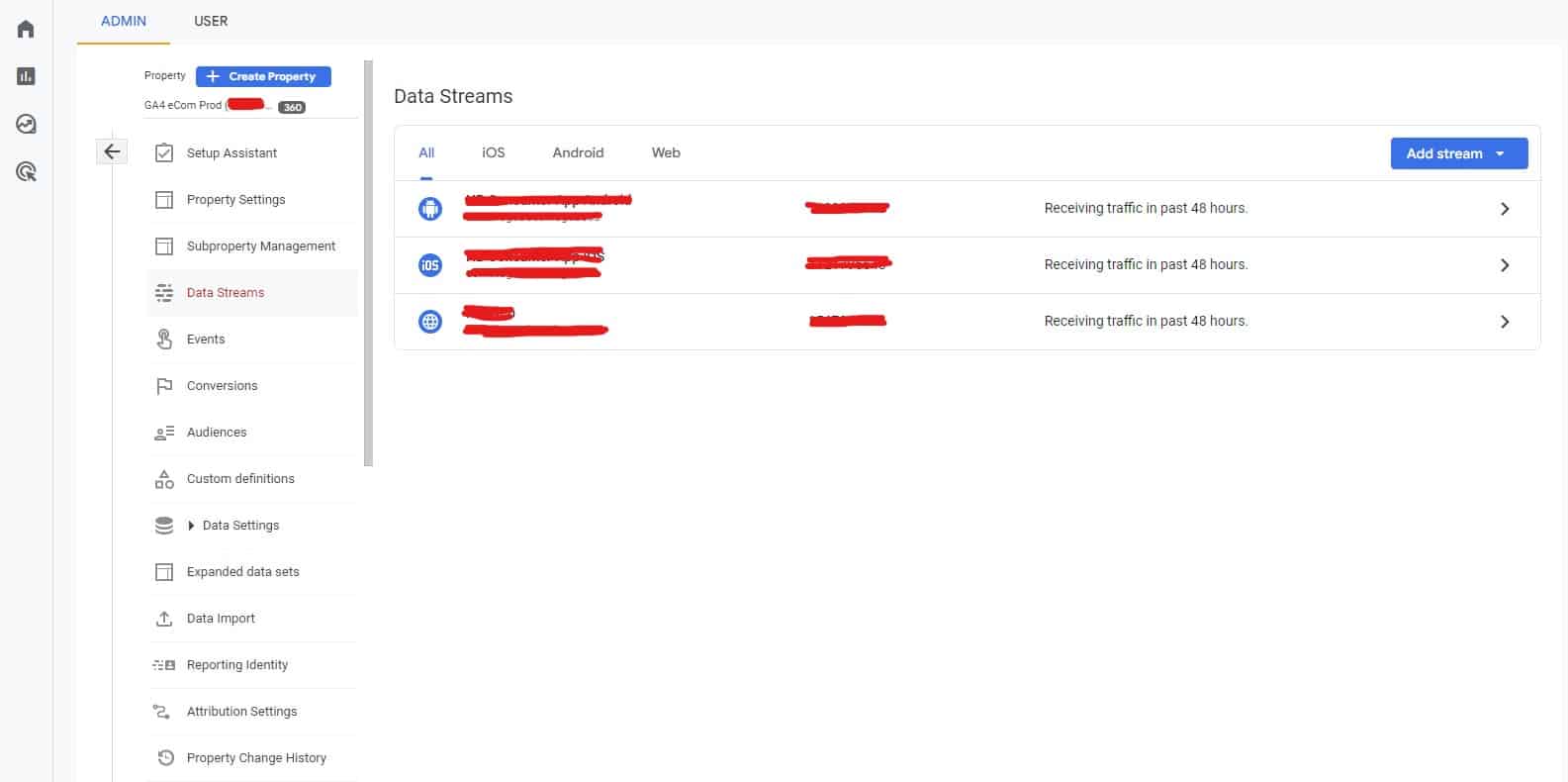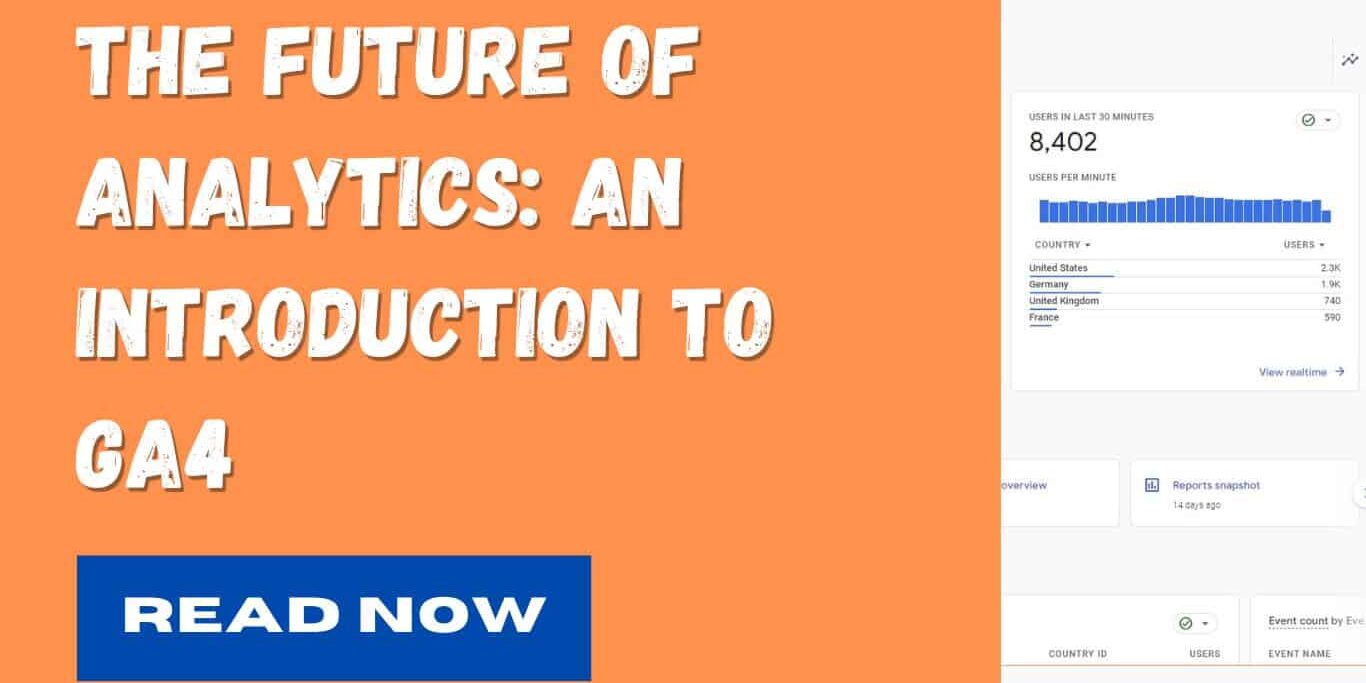Google Analytics has been a fundamental tool for businesses, marketers, and website owners for years, providing essential insights about website traffic, user behavior, and conversion rates. It is a free web analytics service offered by Google that tracks and reports website traffic, giving you an in-depth understanding of your website visitors’ behavior.
In today’s digital age, businesses need to have a deep understanding of their customers’ behavior across multiple platforms and devices to stay competitive. With the rise of mobile devices and social media, traditional web analytics tools like Universal Analytics are no longer enough. Google Analytics has recognized this and has launched a new version of their analytics tool called GA4.
What is GA4?
GA4 is the latest version of Google Analytics, which replaces Universal Analytics beginning on July 1, 2023. It is a new approach to analytics that focuses on user-centric measurement, privacy, and cross-platform tracking. GA4 uses machine learning to provide insights into user behavior and conversion rates. It also allows businesses to track user behavior across multiple platforms (websites and smartphone apps) and aggregate all the data in one single property, providing a more complete view of the customer journey. GA4 also focuses on privacy by allowing users to control data sharing and retention, which is a crucial aspect of data management in today’s world.
Key Features of GA4

1. Event-Driven Data Model
GA4 has an event-driven data model that allows businesses to track user interactions with their websites and apps more efficiently. It provides a more comprehensive understanding of user engagement and behavior. Unlike Universal Analytics, which relies on pageviews and sessions, GA4 tracks events that occur on your website or app, such as button clicks, video views, or downloads. This approach provides a more detailed view of user behavior, making it easier to identify areas for improvement.
2. Cross-Platform Tracking

GA4 allows businesses to track user behavior across multiple platforms, providing a more complete view of the customer journey. With cross-platform tracking, you can see how users interact with your business across different devices and platforms, including websites, apps, and YouTube. This feature enables businesses to make better-informed decisions based on a more comprehensive view of user behavior.
3. Machine Learning Insights
GA4 uses machine learning to provide insights into user behavior and conversion rates. It uses predictive metrics such as churn probability and purchase probability to help businesses optimize their marketing campaigns. With machine learning insights, you can identify the most valuable users and tailor your marketing efforts to their needs. GA4 also provides a more accurate view of user behavior, making it easier to identify trends and patterns.
Conclusion
GA4 is the future of analytics, providing businesses with a more comprehensive view of their customers’ journey. Its event-driven data model, cross-platform tracking, and machine learning insights make it a powerful tool for businesses of all sizes. If you haven’t already, it’s time to upgrade to GA4 and start taking advantage of its features. With GA4, you can gain a deeper understanding of your customers’ behavior, make better-informed decisions, and optimize your marketing efforts to drive growth.
In conclusion, GA4 is a significant upgrade from Universal Analytics, providing businesses with more insights into their customers’ behavior across multiple platforms and devices. Its machine learning capabilities and event-driven data model make it a powerful tool for businesses of all sizes. It is also essential to note that GA4 focuses on privacy by allowing users to control data sharing and retention, ensuring that businesses comply with data privacy regulations.
If you haven’t already, it’s time to upgrade to GA4 and start taking advantage of its features. Check out this Google guide that covers how to migrate from GA Universal to GA4. With GA4, you can gain a deeper understanding of your customers’ behavior, make better-informed decisions, and optimize your marketing efforts to drive growth.
